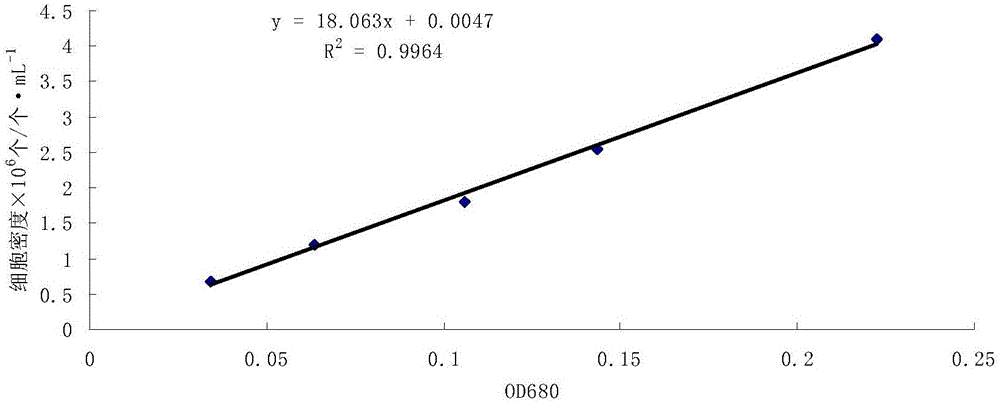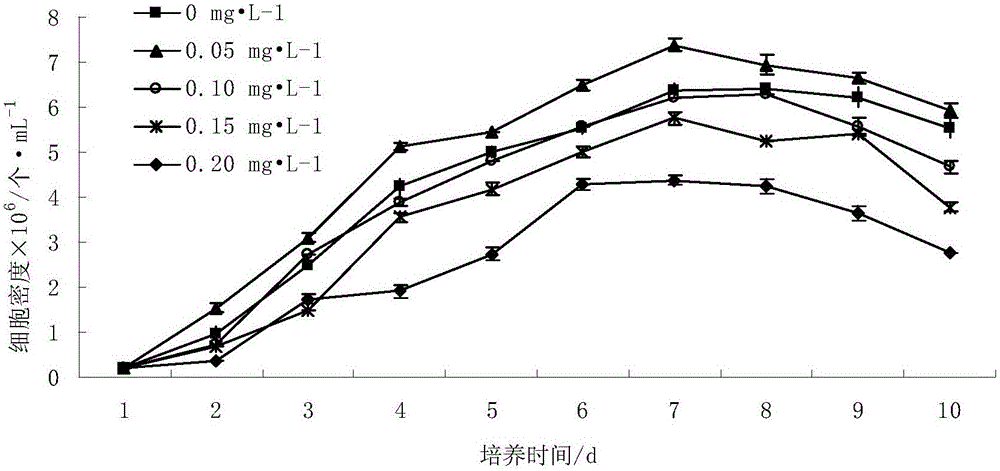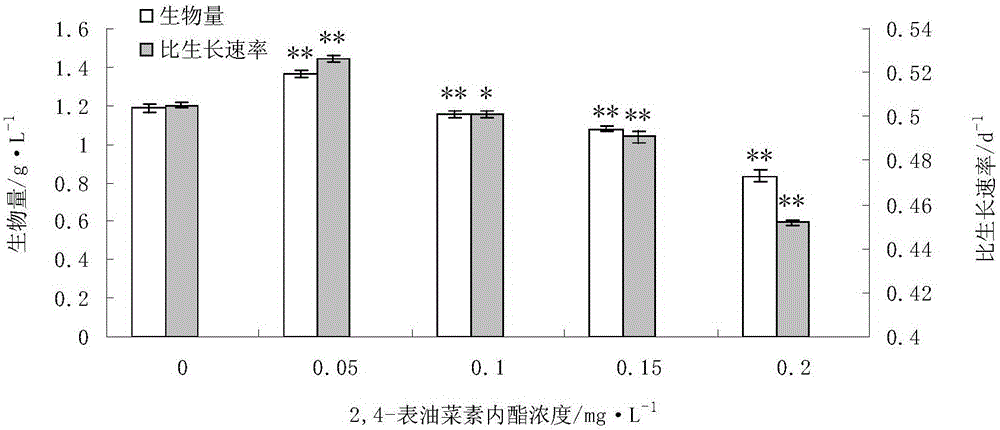Method for promoting accumulation of fucoxanthin and/or lipids in phaeodactylum tricornutum
A technology for the accumulation of fucoxanthin and lipids in algae, which is applied to single-celled algae, and the addition of compounds to stimulate growth. The effect of increasing the content and easy operation
- Summary
- Abstract
- Description
- Claims
- Application Information
AI Technical Summary
Problems solved by technology
Method used
Image
Examples
Embodiment 1
[0036] A method for promoting the accumulation of fucoxanthin and / or lipids in Phaeodactylum tricornutum, after inoculating Phaeodactylum tricornutum in several growth stages into seawater culture solution at a volume ratio of 10%, adding 2,4-epibrassinosin Lactone to make the final concentration of 0.05-0.15mg / L, at a culture temperature of 20°C, a light intensity of 5000lx, a light cycle of 12h / 12h, fully shake the flask 3 times a day, and co-culture for 10d. Add the sterilized Ningbo University No. 3 mother solution to the sterilized seawater in a ratio of 1:1000 and shake it evenly. The formula of the Ningbo University No. 3 mother solution is: KNO 3 10g, KH 2 PO 4 1g, FeSO 4 ·7H 2 O0.25g, MnSO 4 0.025g, EDTANa 2 1g, VB 1 0.0006,dH 2 O100ml.
Embodiment 2
[0038] The relationship between different concentrations of EBR treatment and the cell number of Phaeodactylum tricornutum
[0039] Using OD 680 The light absorption value of Phaeodactylum tricornutum is used to measure the cell number of Phaeodactylum tricornutum per unit volume of culture medium, and the OD of Phaeodactylum tricornutum is regularly measured every day 680 value, and according to the regression equation, obtain the growth status of the Phaeodactylum tricornutum treated by different concentrations of EBR, and obtain the growth curve figure after utilizing different concentrations of EBR to process Phaeodactylum tricornutum, as figure 2 As shown, the results show that: Phaeodactylum tricornutum can grow within the concentration range of 0~0.2mg / L EBR, the overall growth is relatively fast within 1~6d, and it is in the logarithmic growth phase, and the algae cell density within 7~8d Little change, in the stable period, after the 8th day, the algae cell density ...
Embodiment 3
[0041] The relationship between different concentrations of EBR treatment and the biomass and specific growth rate of Phaeodactylum tricornutum
[0042] Phaeodactylum tricornutum was treated with different concentrations of EBR, and its biomass and specific growth rate were changed. The result is as image 3 Shown: When the EBR concentration is less than 0.05mg / L, the biomass and specific growth rate of Phaeodactylum tricornutum are positively correlated with the concentration, and when the treatment concentration is greater than 0.05mg / L, they are negatively correlated with the EBR concentration. The biomass under the culture condition of 0.05mg / L was the highest, reaching 1.54g / L, which was 1.29 times of the control group, 1.18 times of the culture of 0.1mg / L, 1.27 times of the culture of 0.15mg / L, and 1.27 times of the culture of 0.2mg / L 1.64 times lower. The specific growth rate also reached the maximum under the condition of 0.05 mg / L, which was 1.04 times that of the c...
PUM
 Login to View More
Login to View More Abstract
Description
Claims
Application Information
 Login to View More
Login to View More - R&D
- Intellectual Property
- Life Sciences
- Materials
- Tech Scout
- Unparalleled Data Quality
- Higher Quality Content
- 60% Fewer Hallucinations
Browse by: Latest US Patents, China's latest patents, Technical Efficacy Thesaurus, Application Domain, Technology Topic, Popular Technical Reports.
© 2025 PatSnap. All rights reserved.Legal|Privacy policy|Modern Slavery Act Transparency Statement|Sitemap|About US| Contact US: help@patsnap.com



